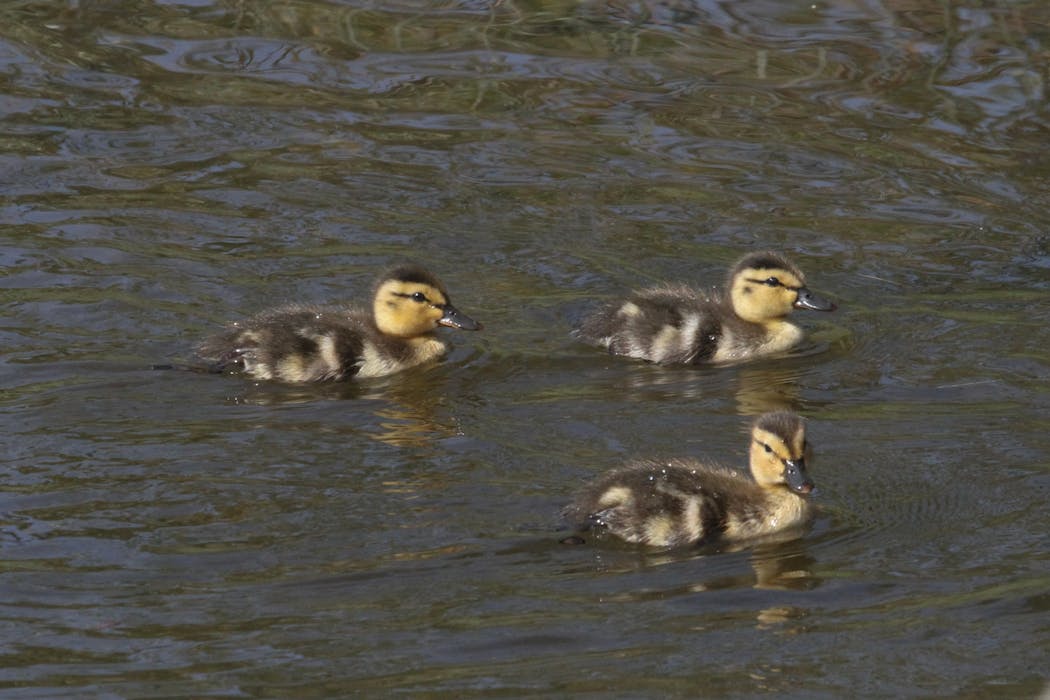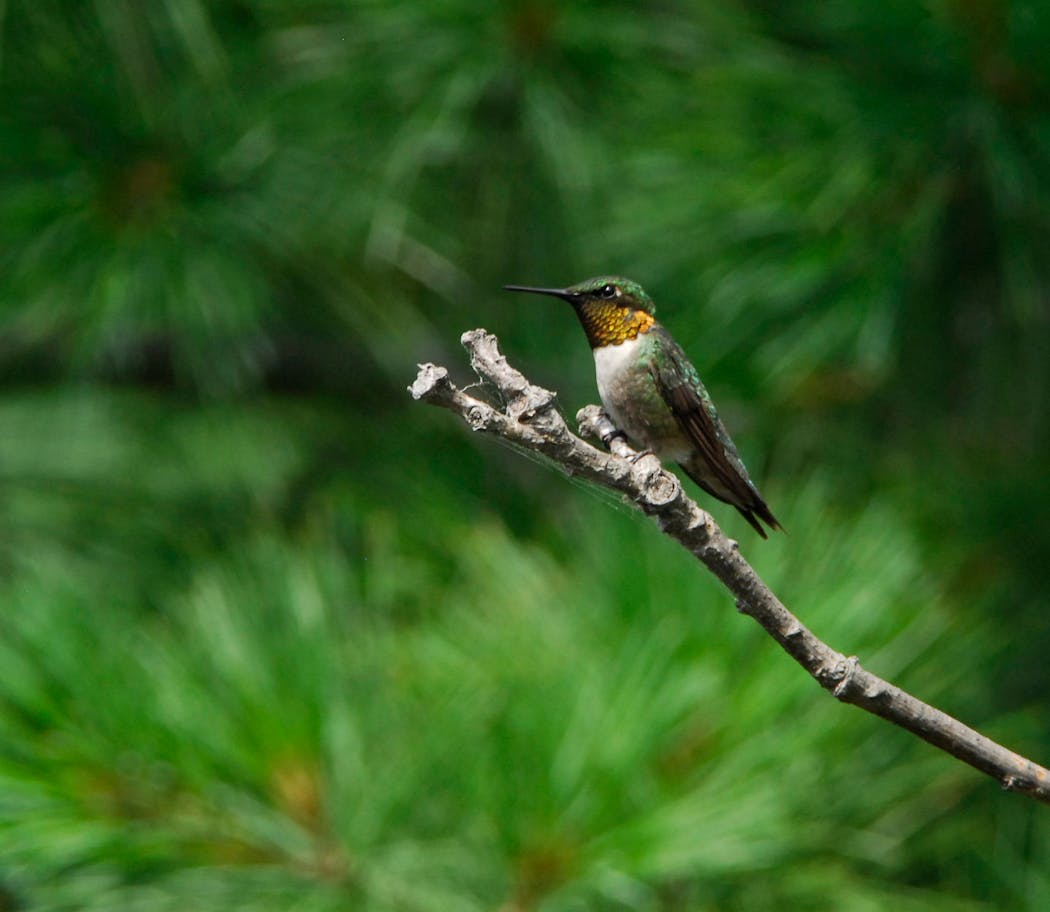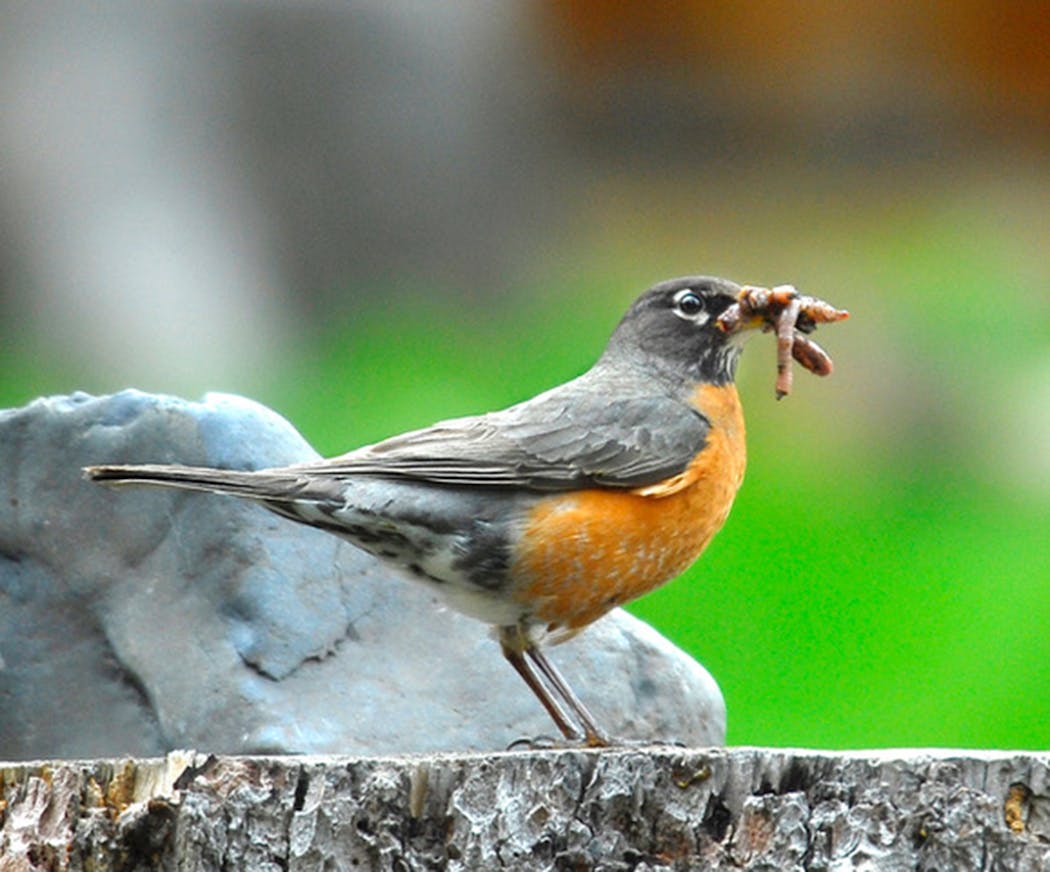Q: A pair of bluebirds nested in one of our nest boxes this summer, and I'm wondering how summer heat affects the just-hatched young birds. Are they at risk?
A: That extremely hot weather in mid-July was a risk to all wildlife, but especially to young birds in nest boxes. The heat builds up in a box and doesn't dissipate as quickly as it might in a nest out in the open. Sorry to say it can get hot enough to kill a whole brood of chicks. I've read about some bluebird nest box monitors who rig up ice packs to keep their customers cool.
Loons underwater
Q: Watching the loons dive at our lake cabin, I'm wondering how much they eat and how long they stay underwater.
A: Loons are great divers and can stay underwater for 5 minutes or more. They prefer to hunt in shallower water, where they generally remain underwater for less than a minute. Once they catch a fish, crustacean or aquatic insect, they usually eat it underwater. Fish make up 80% or more of a loon's diet and they consume about 2 pounds of food a day.
Feather loss
Q: A barred owl sometimes lands in our backyard and today I found a feather, but no other traces of the owl. Might it have been caught by a coyote or fox? We've not heard any calls from it, and it has been very vocal lately, but birds don't call while molting, right?
A: The photo you sent shows a barred owl flight feather (according to "Bird Feathers," by S. David Scott and Casey McFarland), but if the owl had been caught by a predator, you'd almost surely find more than one feather. Instead, this single feather probably came from a molting owl, and they molt throughout the summer. The molt of their flight feathers is staggered so they always retain the ability to fly, and there's no reason why they wouldn't screech and call during the molting period.
Duck walk
Q: I watched a mother mallard lead her ducklings for a walk from one pond to another where I play golf. My question is how many steps do those ducklings take before their first flight?
A: This is an interesting question, and I would say that ducklings have many steps to take before they're able to fly (at about 7-8 weeks). Even though most of their time is spent in the water, they do waddle about on land a bit, too, so I'd say the answer is: lots of steps.
Ducklings racing?
Q: In the middle of the summer I saw three young ducks line up in a row and appear to race each other across a pond. Is it possible that they were truly racing?
A: That's a fun sight to see, but I don't think they were intentionally racing. Young ducks (really, all young animals) like to try out their physical capabilities, and these three ducklings were more likely engaging in some exuberant play.
Hummingbird habits
Q: We've seen up to four female hummingbirds this summer but only two males. Are hummingbirds monogamous?
A: Few people know more about ruby-throated hummingbirds than Bill Hilton Jr., executive director of Operation RubyThroat in York, S.C. After decades of studying and banding the tiny birds, he's found that "the pair bond for many hummingbird species lasts about three-tenths of a second — as long as it takes to copulate. In ruby-throats the male guards his territory with a vengeance, defending against all other adult males but also against females and juveniles.
"A male ruby-throat spends lots of time trying to win over females and may breed with several during any given year, leaving incubation and nestling care to mates while he defends his territory."
Instinct or OJT?
Q: How do birds know how to be parents — is it instinctual or do they learn by doing?
A: That's a good question and the answer is that both instinct and learning play a role in good bird parenting. Some elements of the breeding season, such as selecting a mate, building a nest and responding with food for tiny gaping beaks, are hard-wired into birds. But they also learn over time to be better parents from experience, selecting safer and more secure nest sites and providing adequate parental care even after their youngsters leave the nest. Birds raising their first brood often are less successful than those that have done it before.
Most of us have an example of excellent bird parenting right in our own backyards: The American robin is one of the hardest-working songbirds out there. Robins provide constant care at the nest, then feed their youngsters and teach them how to feed themselves for several weeks after they hop out of the nest. And then they turn around and do it all again for a second brood each summer. Their great parenting skills may help explain why the robin is the most numerous bird in North America, with the U.S. and Canada counting 370 million of these handsome thrushes.
Blackbird problems
Q: Can you tell me when the blackbirds leave Minnesota? They come in every year and push all my year-round birds around, hog the seed and gobble the suet. So I take in the suet and put out safflower seed, which is not as attractive to my steadies. I know it's not a big deal but they really become pests.
A: Sorry to hear about your feeders being taken over by greedy blackbirds and it is a big deal, if they discourage your other birds from feeding. I had a similar experience earlier this summer, with common grackles showing up many times a day, emptying the peanut feeders and eating all the suet. The blue jays and chickadees and others disappeared when the big black birds showed up. I finally had to take in the feeders and suet to discourage them, and after about a week of this they did finally leave. You're smart to switch to safflower, since the blackbirds don't seem to favor it, and it might be worth taking down the suet for a week or two. Birds like grackles and red-winged blackbirds tend to gather out in the countryside after the breeding season, so hope is on the horizon.
St. Paul resident Val Cunningham, who volunteers with the St. Paul Audubon Society and writes about nature for a number of newspapers and magazines, can be reached at valwrites@comcast.net.




